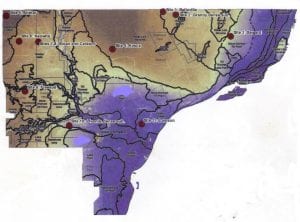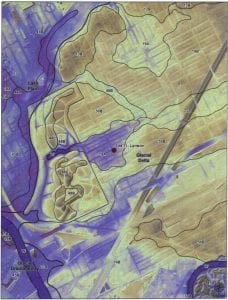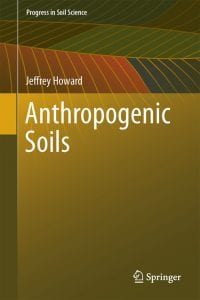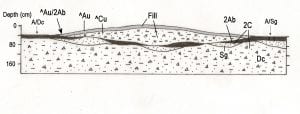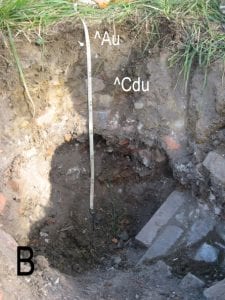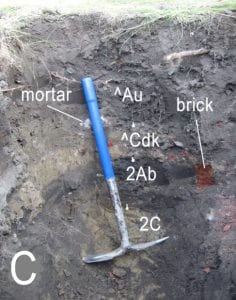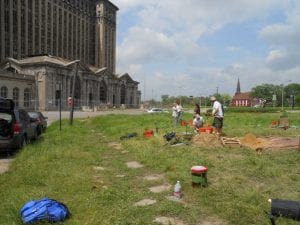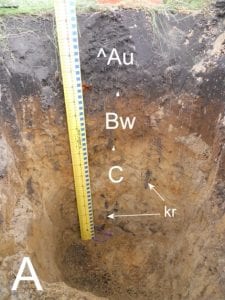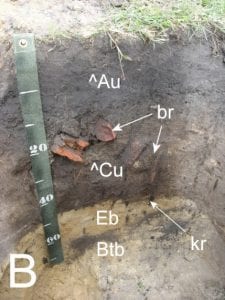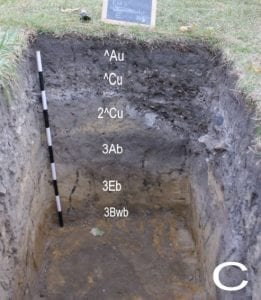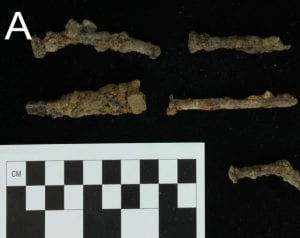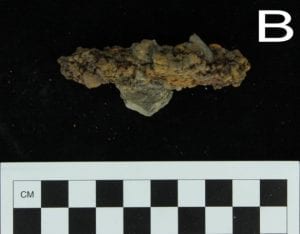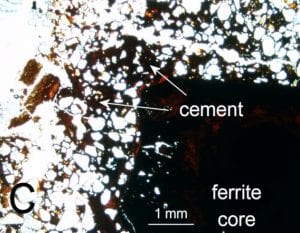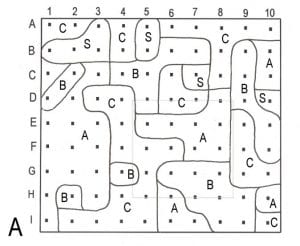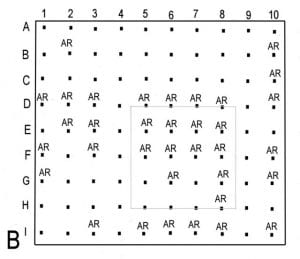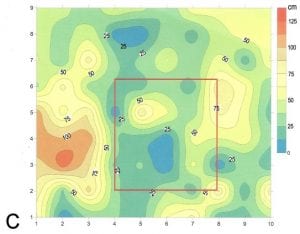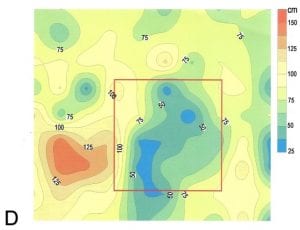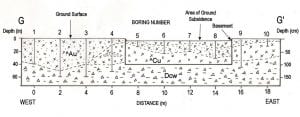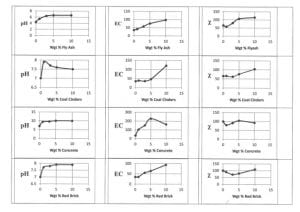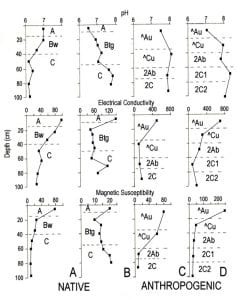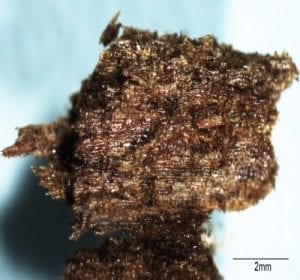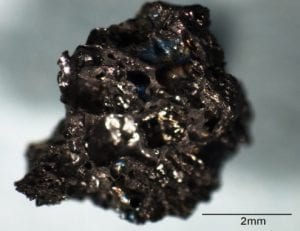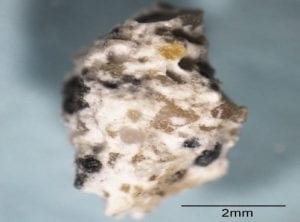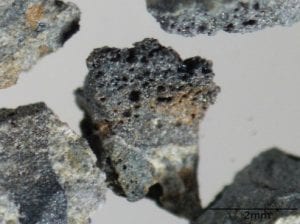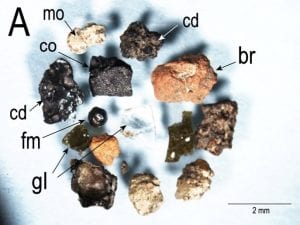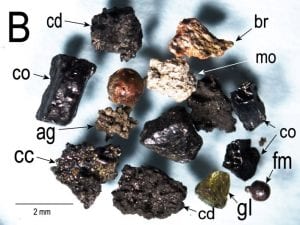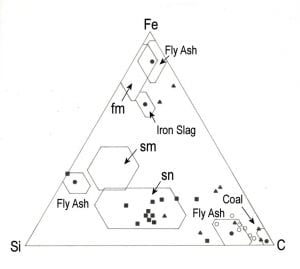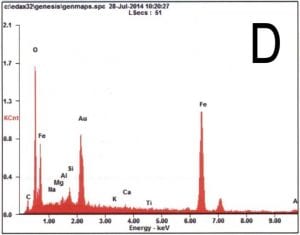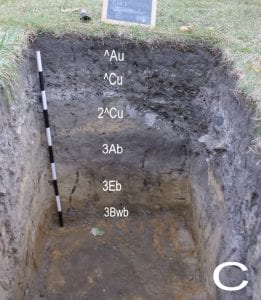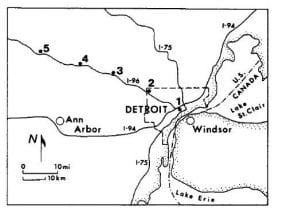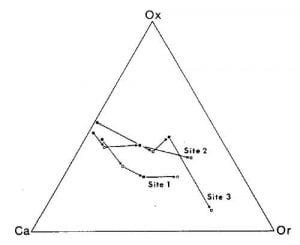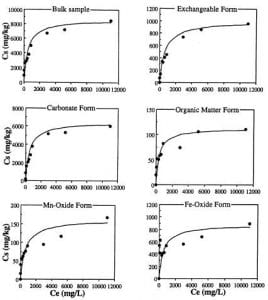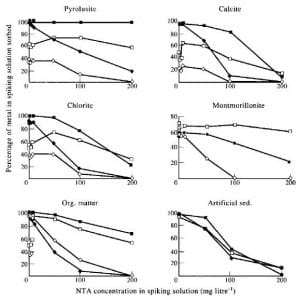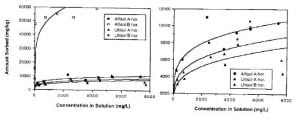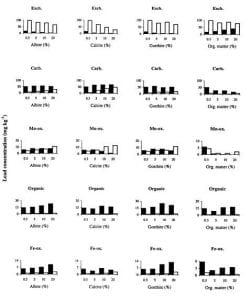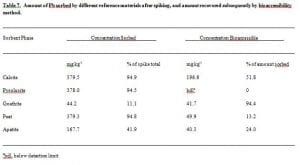Urban areas are generally underlain by a complex mosaic of native and anthropogenic soils, along with urban land which is sealed, i.e. covered with impervious material such as asphalt. Anthropogenic soils are formed by three basic mechanisms: 1) sealing a natural soil beneath one or more layers of artificially manufactured impervious material (e.g., concrete pavement), 2) transformation of a natural soil by human action, or 3) development of a new soil profile in parent materials (anthrosediments) created and deposited by human action, usually with the aid of mechanized equipment. Anthropogenic soils can have the combined features of natural soils and other specific properties developed in a human-impacted environment. Strictly speaking, any natural soil buried by an anthropogenic deposit is human-impacted regardless of the thickness of the artificial capping. However, for interpretive and mapping purposes, anthropogenic soils have been defined in various classifications systems as having developed in an artificial capping ≥ 30 to 50 cm thick.
Anthropogenic soils found in urban areas vary as a function of land use and city structure. They are primarily classified as Technosols in the World Reference Base, the central concept of which is a soil formed in HTM (human-transported material) characterized by an abundance of technogenic artifacts. Urban soils in residential areas are Urbic Technosols characterized by artifacts indicative of human habitation, whereas those associated with industrial land are Spolic Technosols with an artifact assemblage comprised of industrial wastes. Urban soils typically have an ^Au-^Cu profile, although cambic-like horizons may form in 18 to 70 years. They are characteristically heterogeneous and often suffer from excessive compaction, excessive artifact content, diminished biological activity, and reduced infiltration due to surface crusting or water repellency. They generally have elevated levels of pH, exchangeable bases, and carbonate content, but levels of organic C, N and P tend to be very low in recently deposited HTM. Melanization results in the formation of ^A horizons in as little as 12 years under an udic moisture regime with a cover of grass. Under such conditions, urban soils are rather resilient and may re-establish properties similar to those of natural soils in 30 to 100 years.
Wayne County Updated Soil Survey (2017)
The soil survey of Wayne County was recently updated by the National Resource Conservation Service (NRCS). The update began in 2009 after city, county, state, and federal agencies partnered with the NRCS to obtain LiDAR imagery which generated an excellent high-resolution base map. The new survey required the introduction of three new anthropogenic soil series, and 153 new map units. The Wayne County update was groundbreaking in that it was one of the first major urban areas in the United States to be mapped as part of the National Cooperative Soil Survey, and it has led to the development of improved methods for mapping urban soils. The urbanized region of metropolitan Detroit is generally mapped as soil complexes, i.e. a delineation comprised of two or more components too small to be mapped at 1:24,000 scale. These map units are generally comprised of one or more natural and anthropogenic soils (and related landforms). In addition, there are variable amounts of Urban Land, i.e. areas of manufactured land so altered or obstructed by urban works and structures that identification of soils is not feasible.
[Click for link to Wayne County Soil Survey Report]
[Click for link to Wayne County Soil Survey maps]
Anthropogenic Soils Book
Howard, J. L., 2017, Anthropogenic Soils: Springer, Amsterdam, Netherlands, 231 pp.
“A state-of-the-art review of the physical, chemical and mineralogical properties of anthropogenic soils, their genesis morphology and classification, geocultural setting, and strategies for reclamation, revitalization, use and management.”
Morphology, Genesis and Classification of Urban Soils
Howard, J. L., and Olszewska, D., 2011, Pedogenesis, geochemical forms of heavy metals, and artifact weathering in an urban soil chronosequence, Detroit, Michigan: Environmental Pollution, v. 159, p. 754-761.
Abstract: An urban soil chronosequence in downtown Detroit, MI was studied to determine the effects of time on pedogenesis and heavy metal sequestration. The soils have developed in fill derived from mixed sandy and clayey diamicton parent materials on a level late Pleistocene lakebed plain under grass vegetation in a humid-temperate (mesic) climate. The chronosequence is comprised of soils in vacant lots (12 and 44 years old) and parks (96 and 120 years old), all located within 100 m of a roadway. Soil profiles consist of 20-100 cm of mottled, compacted, loamy fill with numerous lithologic discontinuities and abundant artifacts (construction and demolition debris). Profiles have a base saturation of 100% throughout, CECs are low (10-20 cmol kg-1), exchangeable Na is elevated due to deicing salt, and clay fractions are dominated by illite, chlorite or vermiculite, and kaolinite inherited from soil and sediment parent materials. An A-horizon 16 cm thick with 2% organic matter has developed after only 12 years of pedogenesis. A-horizon development increases with time with organic matter content reaching 6% after 120 years of weathering. The 12 year-old soil shows accelerated weathering of iron (e.g. nails) and cement artifacts resulting in a measureable enrichment of the A-horizon in Fe-oxide and carbonate, respectively. Accelerated weathering is attributed to corrosion by excess soluble salts of uncertain origin. Although there is no evidence of Ni contamination, soils are polluted with Zn and Pb. Contamination by Zn and Pb is attributed to fertilizer additions, and paint or combustion of leaded gasoline, respectively. Carbonate and Fe-oxide are immobilizing agents, hence it is recommended that drywall, plaster, cement and iron artifacts be left in soils at brownfield sites for their ameliorating effects. Alternatively, weathering may be accelerated through artificial application of NaCl or CaSO4.
Howard, J. L., Dubay, B. R., Daniels, W. L., 2013, Artifact weathering, anthropogenic microparticles, and lead contamination in urban soils at former demolition sites, Detroit, Michigan: Environ. Pollution, v. 179, 1-12.
Abstract: A chronological sequence of urban soils 3 to 92 years old was studied to determine the effects of time on morphogenesis, artifact weathering, and the geochemical partitioning of Pb. Key chronofunctions determined are an increase in ^A horizon Development Index (defined herein based on soil color) and water-soluble Pb, and a decrease in pH and C/N, with increasing soil age. Key artifact weathering reactions are: 1) portlandite in mortar altered to calcite, 2) ferrite in wrought-iron altered to ferrihydrite and goethite, and 3) carbonaceous materials altered to water-soluble organic substances. Mortar and wrought-iron were found to be Pb-bearing, but weather to produce immobilizing agents. Hence, they are both a source and a sink for Pb. The origin and mobilization of water-soluble Pb is complex and probably includes microbial extracellular polymeric substances, biodegraded soil organic matter, and solubilized organic substances derived from carbonaceous anthropogenic microparticles (soot, char and coal-related wastes).
Howard, J. L., Ryzewski, K., Dubay, B. R., and Killion, T. K., 2015, Artifact preservation and post-depositional site-formation processes in an urban setting: A geoarchaeological study of a 19th century neighborhood in Detroit, Michigan: Jour. Archaeol. Sci., v. 53, p. 178-189.
Abstract: A geoarchaeological study was carried out to assess levels of artifact deterioration occurring in a historic-period urban soil during the 20th century. The study site is a former house-lot in a park created in 1919 by demolition of a residential community in Detroit, Michigan, USA. The results show that despite nearly a century of burial in an urban soil impacted heavily by pollution and other anthropogenic activity, many 19th century artifacts are remarkably well preserved. The observed weathering stability sequence of glass > bone > mortar > plaster > paint is consistent with decreasing solubility product values of the corresponding principal mineral constituent (glass < apatite < portlandite < gypsum < cerrusite). Even severely weathered 19th century nails and mortar can often be distinguished using optical petrographic and SEM-EDAX methods. The excellent state of artifact preservation is attributed to a calcareous soil microenvironment, and artificial compaction which limited the weathering effects of water and oxygen. Artifact preservation was further enhanced by burial beneath a thick biomantle created by the casting activity of an invasive species of earthworm. However, Lumbricus terrestris may now pose the greatest threat to artifact preservation because casting and burrowing activities are decreasing bulk density, and promoting the diffusion of air and water into the soil. Early excavation is recommended to recover artifacts in soils impacted by the combined effects of urban pollution and earthworm burrowing. Anthropogenic microparticles smaller than those normally classified as microartifacts were found to be useful indicators of human occupation.
Howard, J. L., and Shuster, W. B., 2015. Experimental Order One soil survey of vacant urban land, Detroit, Michigan. Catena, v. 126, p. 220-230.
Abstract: An Order 1 soil survey was made of a vacant lot < 0.1 ha in size using a square grid with a two meter spacing (n = 90 points) to test the hypothesis that there is a mappable pattern of anthropogenic polypedons against the alternative that the distribution is random. The vacant lot was formed circa 1998 by demolition of a wood-frame home from the 1920s in an urban residential setting in Detroit, Michigan. The anthropogenic soils studied were formed on a 0-2% slope under grass vegetation from artificial fill comprised of a mixture of poorly drained native soil materials, glacial sediments and artifacts (objects of anthropogenic origin), mainly waste building materials. The results suggest that anthropogenic soils on vacant urban land are mappable, even at the scale of a single vacant lot. The soils approximated an anthrosequence, i.e. a genetically related group of profiles whose characteristics differ mainly as a result of anthropogenic activity. The anthrosequence is comprised of soil phases whose range of characteristics can be used to define anthropogenic taxa, or to characterize the map unit composition of native soil-urban land complexes found on vacant property produced by building demolition. The results also suggest that, in the absence of historic records, demolition site history can be reconstructed from the spatial distribution of artifacts and soil types. More Order 1 surveys are needed to define the characteristics of anthrosequences in other urban settings and involving different soil orders, and to develop predictive urban soil-landscape models needed to provide better interpretive information for users of urban soil survey maps.
Howard, J. L., and Orlicki, K. M., 2015, Effects of anthropogenic microparticles on the chemical and geophysical properties of urban soils, Detroit, Michigan, Soil Science, v. 180, p. 154-166.
Abstract: A study was undertaken to assess the effects of anthropogenic particles on the pH, electrical conductivity (EC), and magnetic susceptibility (MS) of anthropogenic soils in Detroit, Michigan. The results showed that ^Au horizons of anthropogenic soils at residential demolition, industrial, and fly ash-impacted sites were distinguishable from A horizons of native soils (background level). Anthropogenic soils were higher by one pH unit or more, had an EC three to four times background level, and were characterized by an elevated MS which was up to 20 times background. Anthropogenic soils at residential demolition sites had a uniquely high EC signature, whereas those at industrial sites were distinguished by anomalously high MS. Fly ash-impacted soils differed from native soils, but were similar to other anthropogenic soils. Analyses of reference artifacts suggest that the elevated pHs of anthropogenic soils were caused by calcareous building material wastes, whereas elevated ECs were the result of both calcareous and ferruginous wastes. Elevated MSs were attributable to ferrimagnetic materials such as corroded iron nails, coal ash and cinders, and metalliferous slag. Analyses of “artificial soils” indicated that there were measurable effects on pH, EC and MS even with low concentrations of anthropogenic microparticles (< 5 to 10 wgt %). These results support our hypothesis that urban soils contain anthropogenic particles which differ as a function of former land use. Hence, various types of anthropogenic soils and native soils have unique chemical and geophysical signatures. This suggests that EC and MS surveying methods may be used to remotely sense and map urban soils more effectively than using traditional methods alone.
Howard, J. L., and Orlicki, K. M., 2016, Composition, micromorphology and distribution of microartifacts in anthropogenic soils, Detroit, Michigan. Catena, v. 138, p. 103-116.
Abstract: The composition, micromorphology and distribution of microartifacts in anthropogenic soils were studied as part of a project that was evaluating the utility of geophysical surveying techniques for mapping vacant urban land. Petrographic criteria for the identification and classification of microartifacts (MAs) were generated using a set of 25 different types of reference artifacts of known origin, and then tested on a suite of 20 urban topsoils from sites in Detroit, Michigan representing three different land use types (residential demolition, undemolished residential, and industrial). Petrographic and x-ray diffraction analyses showed that reference MAs may be classified into five basic compositional types (carbonaceous, calcareous, siliceous, ferruginous and miscellaneous). Reference MAs were generally distinguishable using optical microscopy by color, luster, fracture and microtexture, and further differentiable using scanning electron microscopy and energy-dispersive x-ray spectroscopy. MAs were found in all of the anthropogenic soils studied, but in highly variable proportions (< 15% to > 80%). Coal-related wastes were the most common types of MAs, and included unspent coal, ash (microspheres, microagglomerate), cinders and burnt shale, probably representing a legacy from the coal-burning era (~1850-1936 AD). These were associated with MAs derived from waste building materials (brick, mortar, glass), and manufacturing wastes (iron-making slag, coked coal), in demolition and industrial site soils, respectively. Urban soils impacted by airborne deposition of fly ash were widespread, including conspicuous black (10YR2/1) topsoils at undemolished residential sites located near railroads and areas of heavy industrial activity. Coal combustion products and iron-smelting slag had distinctive compositions that included magnetite-bearing aluminosilicate glass. These results support our hypothesis that there are systematic relationships between soil geophysical properties, type and abundance of microartifacts, and land use history. Hence, it seems likely that magnetic susceptibility surveying and other geophysical methods will facilitate the mapping of soils in urbanized areas.
Heavy Metal Contamination of Urban Soils
Howard, J. L., and Sova, J. E.,1993, Sequential extraction analysis of lead in Michigan roadside soils: Mobilization in the vadose zone by deicing salts?: Journal of Soil Contamination, v. 2, p. 361-378.
Abstract: Sequential extraction analysis was used to characterize the geochemical partitioning of Pb in roadside soils of the Detroit, MI area. Four soil profiles (10, 30, 60, and 100 m from road) were sampled at 15-cm intervals to a depth of 75 cm at each of five locations along an urban-rural transect. The observed concentrations increase with increasing traffic volume and proximity to the highway, indicating that vehicle emissions are the principal source of Pb. Concentrations in roadside soils of urban sites (>100,000 vehicles per 24 h) are 10 to 15 times greater than the background level of 12 to 22 mg/kg found at rural sites. Sequential extraction data show that the Pb is mainly in carbonate and oxide forms in the most heavily contaminated soils; organically bound forms tend to predominate elsewhere. Both surface and subsurface horizons of soils are polluted at urban sites where translocation in the vadose zone is suggested by elevated levels of Pb to depths of 75 cm. Mobilization is attributed primarily to partial dissolution of organic matter by excess NaCl derived from highway deicing salts and complexation of Pb with organic chelates. Mobilization appears to be occurring in soils up to 60 m from the highway at urban sites.
Salim, I., Miller, C. J., and Howard, J. L., 1996, Sorption isotherm-sequential extraction analysis of heavy metal retention in landfill liners: Soil Science Society of America Journal, v. 60, p. 107-114.
Abstract: The chemical partitioning of heavy metals in soil materials is of great importance in risk assessment, landfill bottom liner design, and remedial investigation. The sorption characteristics of clayey calcareous sediments used to construct landfill bottom liners at four sites in southeastern Michigan were studied using a new method: combined sequential extraction—sorption isothern analysis (CSSA). After spiking to stimulate high levels of contamination, the sediments sorbed large quantities of Pb (~1480-145 000 mg kg^-1), Ni (~750-8100 mg kg ^01), and Cd (~980-5070 mg kg ^-1). Sequential extraction data indicated that Pb and Ni were principally in a carbonate-occluded form, whereas Cd was mainly in an exchangeable form at high levels (>1000 mg kg^-1) of contamination. These results suggest that Pb and Ni will be immobilized by the liner materials but Cd will probably be highly mobile. By applying sequential extraction analysis after spkining, Langmuir sorption isotherms were constructed successfully for most of the individually targeted phases. Thus, CSSA appears to be a promising method for prediction the attenuation capabilities of soils and sediments because it allows the sorption capacities of individual phases to be determined while together in a natural system.
Howard, J. L., and Shu, J., 1996, Sequential extraction analysis of heavy metals using a chelating agent (NTA) to counteract resorption: Environmental Pollution, v. 91, p. 89-96.
Abstract: The geochemical partitioning of Pb, Ni and Zn in contaminated quartz-rich sediment and soil samples was characterized by sequential extraction analysis in the presence and absence of nitrilotriacetic acid (NTA). With NTA, levels of metals recovered are higher in the earlier steps and lower in the later steps of the procedure. This suggests that post-extraction resorption is effectively counteracted by chelation, thereby improving the accuracy of the method. An NTA concentration of 200 mg liter^-1 appears to be sufficient for counteracting resorption without causing significant dissolution of non-targeted phases in the samples studied. However, experiments using reference materials spiked with solutions containing Pb, Ni, Cu and Zn suggest that resorption will remain a problem when large amounts of strong sorbents such as organic matter are present. The results also show that although post-extraction resorption does occur in the absence of NTA, the magnitude of resorption is small (<20 to 30% of the summed total of metal present in the sample) in quartz-rich sediments.
Howard, J. L., and Sledzinski, G., 1996, Geochemical behavior of lead in an Alfisol and an Ultisol at high levels of contamination: Journal of Soil Contamination, v. 5, p. 61-81.
Abstract: The behavior of Pb in the A and B horizons of an Alfisol from Michigan and an Ultisol from Virginia was studied to determine the effects of “shock” loading. Combined sequential extraction-sorption isotherm analysis (CSSA), a relatively new and little tested method, was used in the study. After spiking to simulate severe contamination (~3000 to 60,000 mg/kg), CSSA revealed unexpectedly high levels of exchangeable Pb in the A horizon of the Alfisol and in both horizons of the Ultisol, and showed that the sorption capacities of the phases commonly responsible for fixation of Pb at low to moderate levels of contamination were exceeded. Carbonated sorbed the bulk of the PB in the Alfisol B horizon and has a high sorption capacity in both soils, despite the presence of other phases with a strong affinity for Pb. Thus, when shock loading occurs (e.g., at a shooting range or dump sites), the highly contaminated A horizons of both soils are expected to pose a serious toxic hazard to humans, and groundwater contamination is possible in association with the Ultisol. CSSA proved useful for determining the sorption capacities of the individual phases while together in a natural soil system and therefore is a valuable method for predicting the attenuation capabilities of soils.
Howard, J. L., and Vandenbrink, W. J., 1999, Sequential extraction analysis of sediments of variable composition using NTA to counteract resortion: Environmental Pollution, v. 106, p. 285-292.
Abstract: Artificial sediments were made that contained variable amounts (up to 20% by weight) of feldspar, calcite, Fe-oxide or organic matter. Analysis of samples spiked with Pb and Zn in the presence and absence of nitrilotriacetic acid (NTA) showed that 400 mg l^-1 of chelating agent greatly reduced or eliminated sorption in each case. Further study showed that this NTA concentration did not cause significant mineral dissolution. Resorption during sequential extraction analysis of artificial sediments is indicated by the fact that with NTA, levels of metals are higher in the first step and lower during subsequent steps, compared with levels obtained without NTA. However, the addition of 400 mg l^-1 of NTA to each extracting solution in the sequence appears to be effective for counteracting resorption in feldspathic, calcareous, ferruginous, and carbonaceous sediments. Copyright Elsevier Science Ltd. All rights reserved.
Howard, J. L., Dubay, B. R., McElmurry, S. P., Clemence, J., and Daniels, W. L., 2013, Comparison of sequential extraction and bioaccessibility analyses of lead using urban soils and reference materials: Water Air Soil Pollut., v. 224, 1678-1691.
Abstract: A study was undertaken using urban soils in Detroit, MI and reference materials (cerrusite, anglesite, pyromorphite, apatite, goethite, calcite, pyrolusite and peat) to determine which geochemical forms of Pb measured by sequential extraction analysis are bioaccessible. The results suggest that the water-soluble (Pb-fulvic acid complexes?), exchangeable and part of the carbonate-occluded fractions are bioaccessible. The Fe oxide-occluded, Mn oxide-occluded, and higher molecular weight component of the organically-bound fraction, are not bioaccessible. Sequential extraction predicts the presence of detectable levels of bioaccessible Pb in the rhizosphere when the summed total is ≥ 90 mg kg-1 and labile-Pb is ≥ 30 mg kg-1. Cerrusite (paint-Pb) and anglesite (auto-Pb), recovered mainly in the carbonate-occluded fraction, may cause an overestimation of calcite-Pb. Pyromorphite and apatite-Pb (bone) may cause an overestimation of Fe oxide-occluded Pb.
 Urban Geology of Detroit
Urban Geology of Detroit